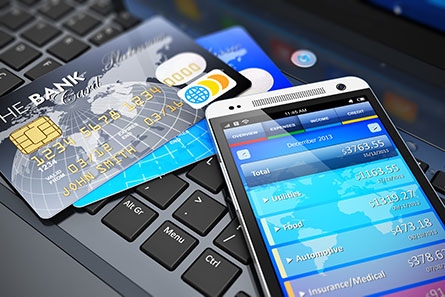
 Big banks have been keenly focused on regaining trust since the 2008 financial crisis. But by telling people “we’ve changed”, rather than showing it through the experience they provide, they’re losing out to the disruptors in the battle for consumers’ hearts. To grow their value, banks must shift their focus to delivering a compelling brand experience.
Big banks have been keenly focused on regaining trust since the 2008 financial crisis. But by telling people “we’ve changed”, rather than showing it through the experience they provide, they’re losing out to the disruptors in the battle for consumers’ hearts. To grow their value, banks must shift their focus to delivering a compelling brand experience.
The multi-generational video landscape
Desperate to rebuild their reputations, many banks have missed out on capitalising on the full brand experience, which is what really needs to be done to win back customers’ loyalty. Trust is still important, but the game has changed: the way consumers experience a financial brand has become as important as the products and services it offers. The brands playing the game best are not necessarily mainstream banks, but smaller, local challengers and brands from sectors outside of banking, including retailers, smartphone manufacturers and payment providers.
Millward Brown’s BrandZ™ data, gathered over 11 years studying the world’s most valuable global brands, proves that business success is tied directly to innovation. Most importantly, it is driven by the perception that a brand is innovating, and in ways that will make people’s lives better. Consumers need to see and feel this innovation in the brand experience. This leads to brand love, which is what grows financial brand value.
Love and feelings are not the way we’ve ever talked about banking before, but it’s critical that the financial services sector starts thinking in these terms. Global banks have lost 11% of their value over the last year, according to BrandZ, and regional banks 12%. We’re at a tipping point, and it’s the disruptors who are recognising what consumers need and successfully filling the gaps. They’re using technology not just to innovate and create new functionality, but to drive a great brand experience.
The race for relevance
One third of millennials don’t think they’ll need a bank in five years, according to a study by creative consultancy Scratch, a division of Viacom. They’re ready to use current accounts, loans and savings products provided by the brands they like and already trust to deliver their shopping or social media services.
Many major banks are not innovating fast enough to meet the needs of the rising numbers of mobile and online banking users, and this has allowed other brands to move in. Mobile functionality is key, driven by the rise of the millennials who were born in a digital world and demand convenience – particularly when they’re making payments. In fast-growth markets including Africa and Indonesia, consumers have skipped the intermediate ‘online banking’ step and moved directly to mobile banking. Adoption is slower in Europe and the US, but it is happening.
In Africa, telecoms companies have stepped in to offer mobile payment services and savings products, while retailer Alibaba’s AliPay is now one of the main ways people in China transfer money.
Ecommerce brands in particular have found themselves perfectly positioned to move into the credit space and add value. They have the infrastructure in place, and big data to help them target relevant customer segments. Unlike mainstream banks they’re not bogged down in a branch-based structure that requires them to transform their business model. They come with a fresh set of eyes, and the ability to build something new.
The frictionless transaction
Attracting consumers and meeting their expectations is about more than simply providing online or mobile access to financial services offerings. The experience – the way the brand delivers a service, and how it engages its customers – has to be effective.
The disruptors are not just providing the functionality people want; they’re providing a seamless experience. PayPal is an exceptional performer in this area, making the purchase process easy by eliminating the need for shoppers to input their card or bank details. Technology giant Tencent, meanwhile, has made it possible to send money through its popular WeChat messaging platform.
Retail brands are adept at using big data analytics to understand what customers are looking for, and engaging them with appropriate communications delivered at just the right time. Very few banks are currently doing this – but those that are can market in a much more sophisticated way, sending targeted messages and ads to consumers based on their life stages. If they’re buying baby clothes online, for example, the bank could offer them life insurance or a car loan (financial products are often purchased at the same life stage as the arrival of a new baby).
A good example is South Africa’s Absa Bank, currently a division of Barclays Africa, which is using historical transactional data to understand and engage its customers. Absa has piloted a predictive service that alerts customers when they’re at risk of overdrawing their account, based on their specific habits and payment obligations. It also offers personalised options such as speaking to an advisor. Almost a third of alerts sent in the pilot resulted in product applications, while 60% of customers took action to better manage their finances.
Big name? No big deal
Smaller local banks are also stealing market share from their biggest global rivals. As economies have slowed, people have become more value-focused. Combined with their distrust of multinational banks, this has led to a widespread realisation that ‘global’ does not necessarily mean ‘better’.
Many local banks have improved their functionality and marketing, so they no longer lack the edge that made global banks a better choice. They’re also more agile because they’re smaller and under less scrutiny, which makes it easier to take leaps in technology and shake things up. Proximity to their target audiences means they understand the market better, and can respond more quickly and in highly relevant ways.
A bigger shop window
Technology is also enabling new financial services options to emerge and thrive. Online comparison sites are driving more informed brand choices. They’re changing the competitive set, giving visibility to disruptor brands that customers may not otherwise have seen, alongside the brands that they’d walk past on the main street.
These sites are also a platform for brands to reach consumers with targeted promotional offers. In the UK, Santander has been successful with a strategy that involves offering very relevant discounts to persuade people to switch accounts.
Consumers have different expectations of financial services brands today, and interact with them in new ways. Mainstream banks must innovate to provide the right functionality, communicate to build the brand, then use technology to create an experience that forges strong relationships with consumers. Itaú Unibanco in Brazil and Australia’s Commonwealth Bank are examples of two banks that have done this, and seen it pay off. In order to quickly make the technical leaps necessary to meet customers’ needs financial services brands should focus on strategic acquisitions and partnerships.
The legacy of the 2008 financial crisis is still sticking to global and regional banks. To sustain their value and their relevance, they need to recalibrate. If they can do this, the trust they’re chasing so hard will return. If they don’t, the mud will continue to stick.
Key Takeaways
The provision of innovative, seamless mobile banking services plays a critical part in enhancing the customer experience.
Big data and social media must be harnessed to personalise marketing messages, based on lifestyle changes or recent search.
Global financial brands that don’t keep a close eye on local market offerings, and respond quickly, will be left behind.
Written by Sana Carlton,Banking and Finance Sector Managing Director at Millward Brown
